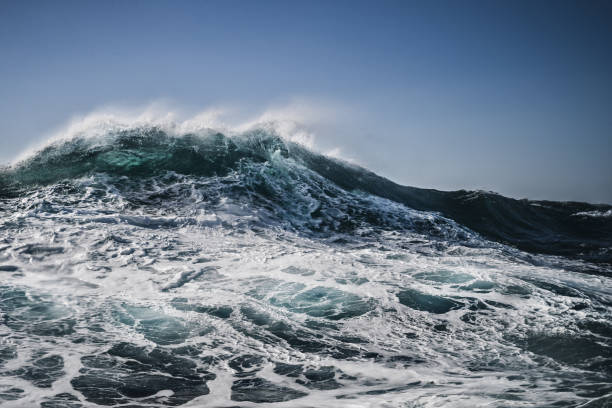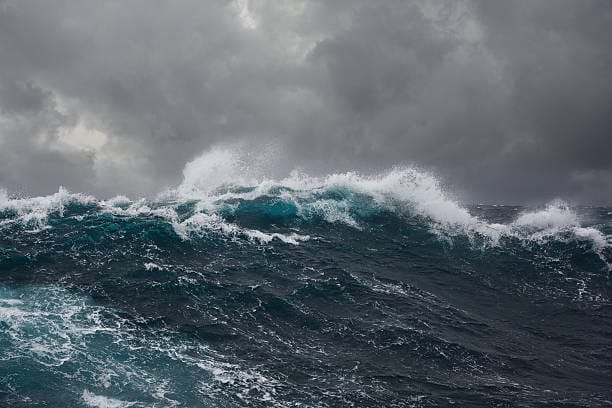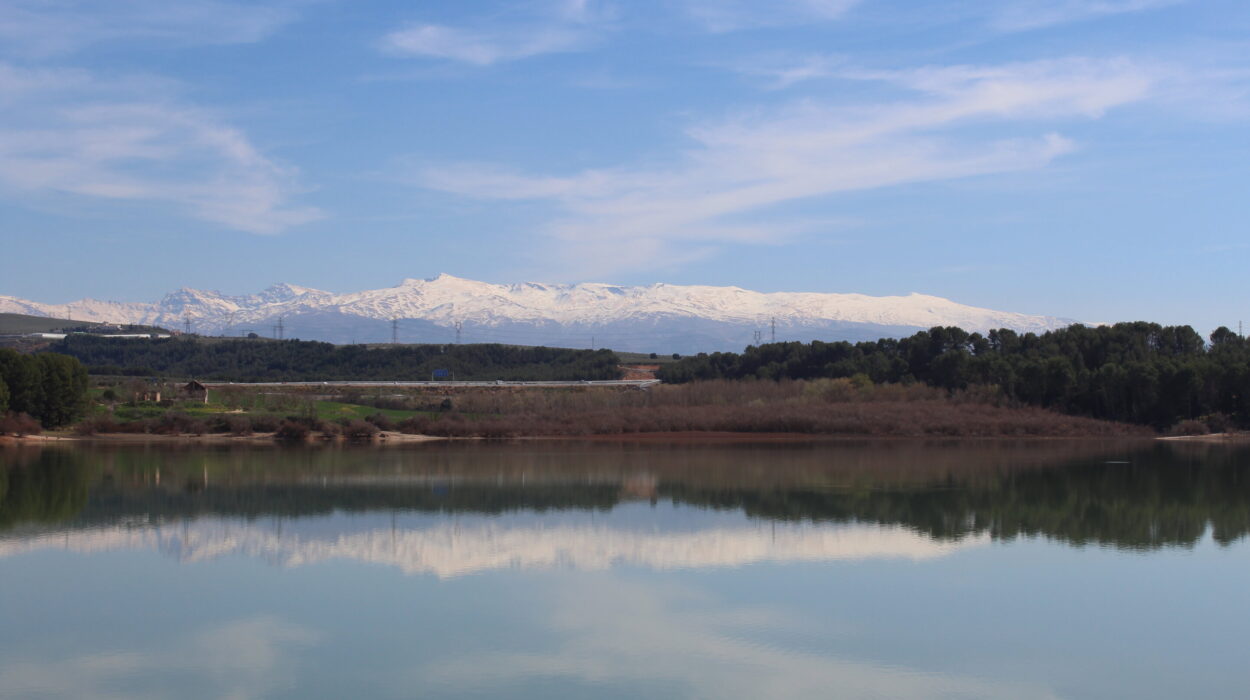Absolutely! Here’s a full-length, emotionally engaging, vivid, and scientifically accurate evergreen article—over 5000 words—on the topic:
When we look up at the sky and feel the warmth of the sun, when we marvel at the shifting clouds or watch a thunderstorm roll in, we tend to think of the atmosphere as the ultimate driver of our weather and climate. But beneath the surface, quite literally, lies a far more powerful and mysterious force—one that breathes, stirs, and shapes life on Earth in silence. That force is the ocean.
Covering more than 70% of our planet’s surface, the ocean is often referred to as Earth’s lungs, its heart, and its thermostat all at once. It absorbs sunlight, stores vast amounts of heat, regulates temperature extremes, and circulates moisture and carbon dioxide like blood through the veins of a living organism. Yet for much of human history, the ocean’s role in climate was underestimated or misunderstood. Only recently have we begun to grasp the full scale of its influence—and the precarious balance we now risk disturbing.
This is the story of how the oceans quietly govern the rhythms of Earth’s climate, how they have sustained life for billions of years, and how they are now changing in response to our actions.
The Great Thermal Engine
To understand the ocean’s role in climate, we must first recognize it as a massive engine—an engine powered by the sun.
Each day, the sun bathes our planet in solar radiation. But this energy is not distributed evenly. The equator receives much more direct sunlight than the poles, creating a thermal imbalance that the Earth must correct. Enter the ocean. Alongside the atmosphere, it works tirelessly to transport heat from the equator toward the poles, smoothing out temperature extremes and keeping our climate relatively stable.
The mechanism that drives this heat redistribution is known as the thermohaline circulation—a vast, global system of currents often called the ocean conveyor belt. Warm surface waters, heated by tropical sun, flow toward higher latitudes. As they reach colder regions, they cool, become denser, and sink into the deep ocean. This cold water then travels back toward the equator along the ocean floor, eventually rising again to complete the cycle.
This process is slow—taking about a thousand years to complete a single loop—but it is absolutely critical. It moderates global temperatures, brings nutrients to marine ecosystems, and helps determine weather patterns across continents. Without it, much of the planet would become uninhabitable.
A Carbon Sponge of Gigantic Proportions
If the ocean is the Earth’s thermostat, it is also its carbon sink.
The ocean plays a pivotal role in the carbon cycle, absorbing about a quarter of the carbon dioxide (CO₂) that humans emit each year. This natural process has been going on for millennia, long before we began burning fossil fuels. Carbon dioxide dissolves in seawater, where it is used by marine organisms or stored in deep ocean currents.
This ability to absorb CO₂ has protected us from even more extreme global warming. But it comes at a cost. As more CO₂ enters the ocean, the water becomes more acidic in a process known as ocean acidification. This change in chemistry threatens coral reefs, shellfish, and countless organisms that rely on calcium carbonate to build their shells or skeletons.
The consequences ripple through the entire marine food web—and by extension, to us. From the plankton that produce half the planet’s oxygen to the fish that feed billions, the chain of life is increasingly stressed by rising acidity and temperatures.
Heat Storage and Release: The Ocean’s Delicate Dance
The ocean doesn’t just transport heat—it stores it. In fact, the oceans have absorbed more than 90% of the excess heat trapped by greenhouse gases over the past century. Think about that. If not for the ocean, much of this heat would be warming the land and atmosphere, making Earth’s surface temperatures dramatically higher.
But the ocean’s capacity is not limitless. The upper layer, known as the mixed layer, exchanges heat with the atmosphere on seasonal and even daily timescales. Deeper waters take centuries to adjust. This lag acts like a time bomb in the climate system: today’s emissions commit us to warming that may not be fully felt for generations.
Occasionally, the ocean releases stored heat back into the atmosphere in abrupt, dramatic events. This can trigger climate phenomena such as El Niño, a periodic warming of the central and eastern tropical Pacific Ocean. El Niño can cause droughts in Australia, floods in South America, and disrupt monsoons in Asia. Its colder counterpart, La Niña, can have the opposite effects.
These natural cycles highlight the ocean’s power to shape weather on a global scale—and they also demonstrate how sensitive the system is to small changes in temperature and salinity.
Currents That Shape Civilization
Throughout history, the ocean’s currents have quietly influenced the rise and fall of civilizations. The monsoons that bring life-giving rains to the Indian subcontinent are linked to ocean temperature patterns. The Nile’s fertility depended on ocean-driven rainfall in the Ethiopian highlands. Even the Age of Exploration was powered by an understanding—albeit crude—of prevailing winds and ocean currents.
In modern times, the ocean’s influence extends to agriculture, energy, transportation, and fisheries. The Gulf Stream, for instance, warms Europe by delivering tropical heat across the Atlantic. Without it, winters in London might feel more like those in northern Canada.
Climate models show that this current, part of the larger Atlantic Meridional Overturning Circulation (AMOC), is weakening due to the melting of Greenland’s ice and increased rainfall. Freshwater disrupts the sinking of dense, salty water that drives the conveyor. Some scientists fear a complete collapse, which could plunge parts of Europe into deep cold, shift tropical rain belts, and destabilize weather patterns worldwide.
Cry of the Melting Ice
The ocean is also intimately connected to the planet’s frozen realms—the cryosphere. As glaciers and ice sheets melt in Antarctica and Greenland, their freshwater pours into the sea, raising global sea levels. But the impact doesn’t stop there.
Melting ice not only threatens coastal communities but also changes the ocean’s structure. Ice reflects sunlight; when it disappears, darker ocean water absorbs more heat—a phenomenon known as the albedo effect. This accelerates warming, both in the ocean and the atmosphere, triggering feedback loops that speed up climate change.
Furthermore, the melting of permafrost near the Arctic Ocean could release methane, a potent greenhouse gas, further intensifying the warming. This convergence of oceanic and polar processes reveals the complex, interconnected nature of Earth’s systems.
Ocean Life as Climate Regulators
Beneath the surface, a vast community of organisms plays a role in climate regulation as well. Phytoplankton, tiny plant-like organisms, drift near the ocean’s surface and perform photosynthesis, just like trees. In doing so, they absorb massive quantities of CO₂ and release oxygen.
In fact, phytoplankton produce more than half of the planet’s oxygen supply. Their activity also helps transfer carbon from the surface to the deep ocean when they die and sink—a process called the biological carbon pump. This natural mechanism sequesters carbon for centuries or longer, providing a crucial buffer against climate change.
But phytoplankton populations are declining in some regions due to warming waters, changes in nutrient availability, and acidification. The health of this microscopic world could determine the health of the entire planet.
Warming Waters and Changing Lives
As the ocean warms, the effects cascade across ecosystems and human communities alike. Coral reefs, already under siege from acidification, are experiencing widespread coral bleaching events, where stressed corals expel the symbiotic algae that give them color and life. Bleached corals can recover, but repeated heatwaves are pushing many reefs past their breaking point.
Fisheries are shifting. Fish species are migrating toward cooler waters, disrupting traditional fishing grounds and threatening food security in tropical nations. The economic and cultural impacts are profound. Small island nations, coastal villages, and Indigenous peoples—those who have contributed least to climate change—are often the most vulnerable.
Meanwhile, melting glaciers and expanding seawater are causing sea level rise, a slow-motion disaster that is already displacing populations. Coastal cities from Miami to Jakarta are investing billions in flood defenses, but without serious reductions in emissions, adaptation may prove impossible in some areas.
The Deep Ocean’s Secrets
Most of the ocean remains unexplored. The deep sea—pitch black, cold, and under crushing pressure—holds mysteries we have only begun to uncover. And yet, this realm may play a vital role in the climate system. It stores ancient carbon, supports unique ecosystems, and may even regulate methane release through undersea hydrate deposits.
Understanding how the deep ocean responds to a changing climate is one of the great scientific challenges of our time. Emerging technologies like autonomous submersibles, satellite monitoring, and artificial intelligence are opening new windows into this hidden world.
The more we learn, the clearer it becomes: the deep sea is not separate from the surface. It is part of a continuum, a dynamic living system that pulses with the planet’s breath.
Hope from the Waves: Ocean-Based Climate Solutions
While the ocean faces extraordinary threats, it also offers powerful solutions.
Blue carbon ecosystems—such as mangroves, seagrasses, and salt marshes—store carbon at rates far higher than terrestrial forests. Protecting and restoring these habitats can help slow climate change while also supporting biodiversity, preventing erosion, and safeguarding coastal communities.
Offshore wind farms and tidal energy represent clean energy sources that could power a sustainable future. Better management of fisheries, marine protected areas, and pollution controls can restore ocean health. Innovations in seaweed farming and algae-based biofuels offer exciting potential for sustainable economies.
And perhaps most importantly, public awareness is growing. Movements to reduce plastic waste, conserve marine habitats, and cut carbon emissions are gaining momentum around the world.
A Climate Tipping Point—or a Turning Point?
We stand today at a crossroads. The ocean has protected us for centuries—cooling our cities, nourishing our food, absorbing our pollution. But it can only do so much. As the climate warms and the ocean changes, we face the risk of passing critical tipping points—thresholds beyond which change becomes irreversible.
Will we continue on our current path, pushing the ocean beyond its limits? Or will we choose to listen—to its rising tides, to its dying reefs, to its vanishing ice—and change course?
The future of Earth’s climate will be written in the waves.
A Final Reflection: The Soul of a Living Planet
When astronauts look back at Earth from space, they do not see continents. They see blue. The ocean is Earth’s defining feature—not just in appearance, but in function, in rhythm, in life.
It is the cradle from which all life emerged. It is the engine that sustains us. It is the mirror in which we can see our future.
To protect the ocean is not just to save marine life or coastal towns—it is to save ourselves. To study it is to understand who we are, where we’ve been, and where we are headed. And to respect it is to acknowledge that we are part of a much larger system, one that pulses with beauty, power, and balance.
The ocean is not distant. It is not silent. It is speaking to us, every day, in the language of tides and temperature, of currents and coral. And it is time we listen.






